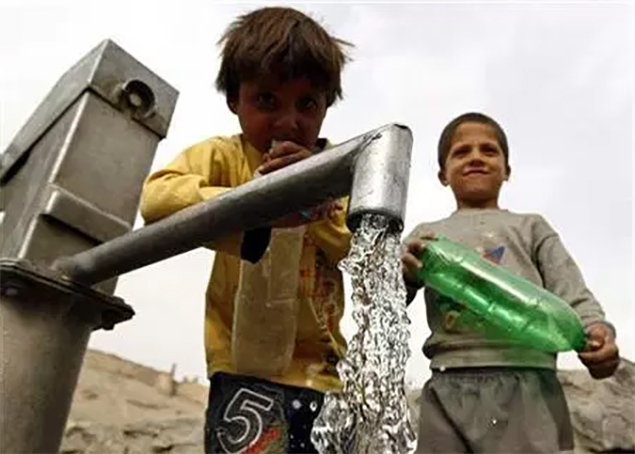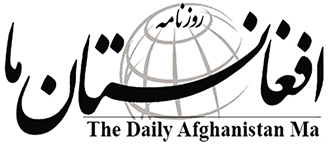Studies show that water scarcity is intensifying throughout the world specially in Afghanistan and its neighboring countries.Globally, thousands of incidents and conflicts occurred over the shared river basin and resource in last decades. More than one billion people around the world have no access to safe, clean drinking water, and over 2.5 billion do not have adequate sanitation service. Over two million people die each year because of unsafe water - and most of them are children! Though water covers two-thirds of the surface of the earth, but fresh water estimated 0.002% on the earth. That’s why, many regions around the world are suffering from shortages of water.
In Afghanistan, as experts say, the water table has dropped unprecedentedly, and thousands of settlements and farms face sever water crisis. According to the recentreports of ministry of energy and water, the total volume until a few years ago had been 76 billion cubic meters but this dropped by 10 billion cubic meters in recent times.The ministry reports emphasizethat the drop in water was extremely worrying and that if the situation continues – with people using too much water – the water resources will drop another five billion cubic meters within the next five years. According to the ministry, climate change and the over usage of water by people are the reasons for the drop in water levels.
Thus, Ali Ahmad Osmani, the water and Energy Ministers tressed the need for better implementation of big projects to control Afghanistan’s waters. “We have started reforms in three areas in order to improve work on our projects,” he said a few days before. He added, “Making the contract process easy for contractor companies is also a part of our plans.” Also, other experts highlight thatAfghanistan should have a clear policy on water management because it is one of the most valuable capital of the nation. The government need to make bigger plans to control Afghanistan’s waters and these plans should be implemented in the framework of a clear water policy.
Because of the daily overuse of underground water and poor water policy, there is only 17 billion cubic meters of underground water compared to 18 billion cubic meters in the recent past. In most countries, water is distributed through pipelines but in Afghanistan nearly 50% of water is wasted through traditional raceways. Accordingly, many peopledo not use itthriftily while others are suffering from its shortage. As experts believe, If the situation continues in this way, by 2030 we will face a lack of water in our river basins and we will also face shortage inunderground water. However, the issue which has raised now, follows several decades of steady droughts across Afghanistan’s northern, northeastern, central and western provinces which already led to a large-scale of food crisis but now it is the high time to take a strategic action.
The good news for now, is that the United Nations Children’s Fund (UNICEF) recently announced that they plan to launch a two-year water distribution program to the people in 27 provinces across Afghanistan.The Ministry of Rural Rehabilitation and Development (MRRD) has said that the UNICEF will provide $43 million to implement the program in 2018 and 2019 to help Afghan children and their families get access to safe drinking water. MRRD officials have said the ministry of rural rehabilitation and development also plans to invest $22 million for clean drinking water projects and hygiene.
The Government of Finland has contributed $2.4 million to support UNICEF’s program in Afghanistan to provide children and families with safe water, sanitation and hygiene, according to UNICEF’s statement.“The flexible grant is part of Finland’s continued commitment to Afghanistan and follows a previous grant of similar size that provided gender-separated toilets, handwashing facilities and menstrual hygiene management that benefited almost 55,000 students in 102 schools,” the statement added.It also said that improvements in water and sanitation facilities in schools have a positive impact on attendance, quality of learning and well-being of students, especially girls.The new funding will further reinforce this area of work, and support deprived communities to reach open defecation-free status, to access and use safely managed drinking water, and to disseminate information on the importance of hygiene practices,” as they said.
By and large, there is unanimous concerns that the level of rain and snowfall has significantly decreased compared to previous years and the current programs are not enough to cope the rising issues. As water sources are heavily dependent on annual rainfall and snowfall there is needs for billions of dollars for dams and irrigation system to stabilize the conditions and prevent from farther crisis in the future. According to experts, the amount of rain and snowfall in Afghanistan makes 57 billion cubic meters of water annually but due to lack of proper management only between 30 to 35 percent of this water can be used in Afghanistan and the rest ends up in foreign countries. Consequently, about 68% of Afghan has not access to clean water system and 80% of the farms severely affected by droughts and water shortage.So, the government and humanitarian community should act quickly and profoundly to ensure this does not degenerate into farther disasters. However, the national unity government has paid more attention in building water infrastructure but there is need for more investment.
Home » Opinion » Water Crisis in Afghanistan
Water Crisis in Afghanistan
| Mohammad Zahir Akbari

